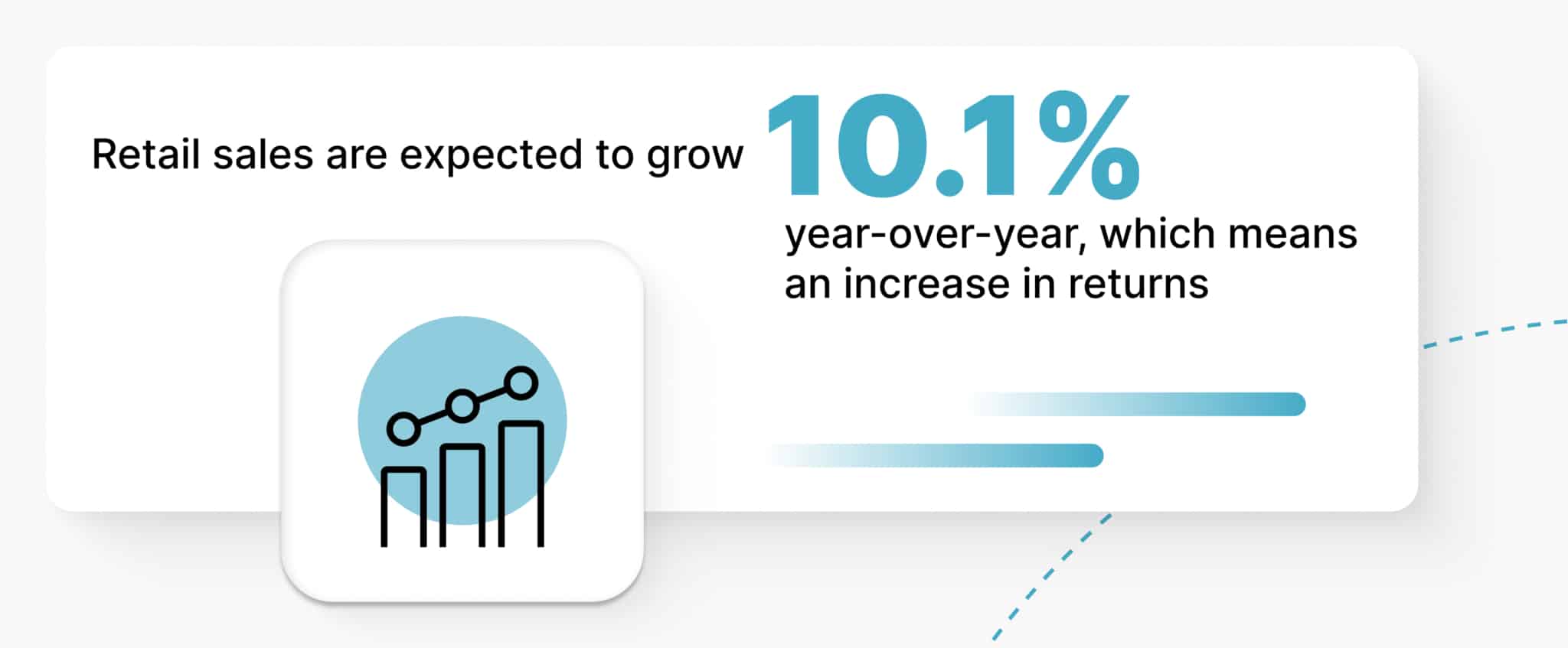Mastering Returns Management: Key Strategies for Retailers in the Consumer-Driven Era

With the advent of online shopping, consumers have grown to expect not just quality products and competitive prices but also flexible and forgiving returns policies. This expectation is not just a trend; it reflects a deeper shift in consumer behavior that’s reshaping the retail landscape. But what drives this demand for hassle-free returns, and how does it impact how businesses approach their returns management system and reverse logistics?
At its core, the psychology behind returns is rooted in the desire for risk mitigation and trust in the buying process. When shoppers know they can easily return a product, they feel more confident in their purchase decisions. This confidence boosts their willingness to try new products, brands, or online stores, knowing that the returns process is straightforward. It’s a safety net that encourages exploration and experimentation in the online shopping world.
Understanding Consumer Behavior
Today’s consumers are looking for more than just the ability to return items; they want an easy, fast, and transparent returns process. Retail sales are expected to grow 10.1% year-over-year, which means an increase in returns.
A returns management system that offers prepaid return labels, clear instructions, and immediate acknowledgments or refunds sets the standard. Moreover, tracking the returns process adds a layer of transparency and reassurance, further enhancing the customer experience.

The simplicity and efficiency of a returns policy directly influence shopping habits. Consumers are more likely to shop with retailers who have a reputation for easy returns. This behavior underscores the importance of a robust reverse logistics operation that can handle processing returns smoothly and keep customers coming back. In essence, a great returns policy supported by an effective returns management system is not just a cost of doing business; it’s a strategic tool that can drive sales, build loyalty, and differentiate a brand in a crowded market.
The Evolution of Returns Policies
Returns policies are very much centered on the consumer, as they have to be. For example, in a recent survey, 39% of respondents said they’d likely ditch a brand that stopped offering free returns. That is to say, a retailer’s returns policy can make or break customer loyalty.

The simplification and flexibility of returns policies have profound implications for reverse logistics operations. Businesses must now design their reverse logistics with efficiency and customer satisfaction in mind, ensuring that returns are processed quickly and the refunded or exchanged items are back in the hands of customers without delay. This requires a dynamic returns management system capable of adapting to the varying volume and nature of returns.
Returns Management as a Strategic Tool
Innovative retailers are leveraging their returns policies and reverse logistics capabilities not just as operational necessities, but as strategic tools to enhance competitiveness. By making the returns process a seamless part of the customer journey, businesses can differentiate themselves in a crowded marketplace. An effective returns management process becomes a key component of this strategy, enabling retailers to manage returns efficiently while collecting valuable data to further refine their approach.
Many leading retailers have set benchmarks in adapting their reverse logistics process and return policy to consumer demands. For instance, offering store credit, extended return periods during the holiday season, or allowing in-store returns for online purchases are ways businesses have made the returns process more accommodating. These adaptations not only improve the customer experience but also showcase the flexibility and resilience of a business’s reverse logistics operations.
Adapting to Consumer Expectations with Efficient Reverse Logistics Process
As consumer expectations continue to evolve, the onus is on retailers to ensure their return policies and reverse logistics processes are not just responsive but also proactive in addressing these needs. Here’s how businesses can adapt effectively:
Analyze Consumer Behavior
Understanding the underlying reasons behind returns and customer expectations is crucial. Regularly gather and analyze data on why items are returned to inform your reverse logistics strategy.
- Customer Surveys: Implement post-return surveys to gather customer feedback on the returns process and product satisfaction.
- Returns Data Analytics: Use data analytics to identify patterns in returns and address common issues.
Streamline the Returns Process
Make the returns process as simple and hassle-free as possible for customers.
- Easy-to-Understand Policies: Ensure your return policy is clear, concise, and easily accessible.
- Hassle-Free Logistics: Offer prepaid return labels, multiple return options (e.g., in-store, mail), and simple packaging solutions.
Leverage Technology
Invest in technology to enhance the efficiency of your return management system and reverse logistics.
- Automated Returns Management Systems: Implement systems that automate the return process, from initiation to restocking or disposal.
- Real-Time Tracking: Provide customers with the ability to track their returns and receive updates on the status of their refund or exchange.
- Inventory Management Software: Adapt inventory management software that will enable you keep a tight grip on the flow of your inventory.
Focus on Customer Service
Excellent customer service should be at the heart of your returns policy.
- Flexible Returns Policies: Consider offering free returns, extended return periods, or no-hassle refunds as ways to improve customer satisfaction.
- Responsive Support Team: Ensure your customer service teams are knowledgeable and ready to assist with returns and inquiries.
Sustainability Practices
Incorporate sustainable practices into your reverse logistics.
- Eco-Friendly Packaging: Use recyclable or biodegradable materials for returns packaging.
- Refurbishing and Recycling: Develop a system for refurbishing returned items for resale or recycling materials that cannot be resold.
Continuous Improvement
Regularly review and adjust your return policies and reverse logistics operations to stay aligned with consumer preferences and industry trends.
- Feedback Loops: Create mechanisms to learn from each return and continuously improve your processes.
- Innovation and Adaptation: Stay open to adopting new technologies and practices that can enhance the return experience for customers and streamline operations.
As retailers navigate the complexities of managing returns and reverse logistics, the focus should always remain on the customer. A well-crafted return policy and an efficient returns management software are more than operational necessities—they are vital components of the customer experience. By prioritizing these elements, businesses can not only meet the current demands of their customers but also build a foundation for enduring success in the evolving retail environment.
Ready to take control of the entire reverse logistics process? Find out how ReverseLogix can help streamline your process with purpose-built return management. View our pricing plans or schedule a demo with us.
Frequently Asked Questions
Returns often stem from misleading product descriptions, damage during transit, shipping errors, late deliveries, post-purchase dissatisfaction, price comparisons, or buyer regret. Addressing these issues through better packaging, accurate listings, timely delivery, and strong customer service can reduce returns and enhance customer satisfaction.
Handling returns involves shipping fees, labor for processing, restocking, and warehousing expenses. To mitigate costs, optimize return policies, use return management software, promote exchanges, partner with logistics providers, and analyze return reasons for process improvements. Efficient strategies enhance profitability and customer satisfaction.
Returns are typically not accepted for items outside the return window, used or opened products, missing original packaging or tags, customized goods, and final sale items. Frequent return offenders may also be excluded. A clear return policy helps protect businesses from abuse while ensuring fairness for customers.